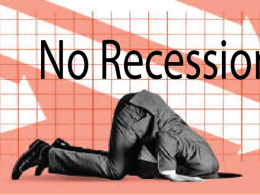Diwali, Dollars and Gold
By Frank Holmes, CEO and Chief Investment Officer, U.S. Global Investors
Today marks the beginning of Diwali festival in India and the next stage in gold’s seasonal patterns. The five day “Festival of Lights” is a major Hindu holiday and involves the lighting of small clay lamps (diyas) filled with oil to signify the triumph of good over evil. During Diwali, lights illuminate every corner of India and fireworks light up the skies.
Activities during these five days include worship, many feasts, spending time with families and exchanging gifts. The latter is a big driver of gold demand.

Traditionally, Indians are very sensitive to fluctuating gold prices but it appears they are adjusting to the concept of higher gold prices. Last year, China surged ahead of India in terms of jewelry demand until Diwali reignited retail demand in India.
It also didn’t hurt that India’s central bank bought 200 tons of gold around $1,000 an ounce. This put a floor under gold and changed the mentality of retail buyers who had been waiting for a pullback below $1,000. In fact as of June 2010, Indian jewelry demand was only off 2 percent on a year-over-year basis despite gold reaching new record highs. A report from the Bombay Bullion Association says that Indian gold imports rose to 43 tons, an 18 percent increase from the same time last year.
India isn’t the only place that jewelry demand is picking up. According to the World Gold Council’s most recent Gold Demand Trends report, jewelry demand experienced its smallest decline since early 2008 during the second quarter of this year.
 Gold as an investment has been grabbing headlines and is certainly a key factor in overall demand. However, demand for gold jewelry is still the king. In 2009, retail investment and ETFs totaled 1,348 tons of gold—39 percent of total demand. However, jewelry demand, which was at its lowest level in 10 years, totaled 1,759 tons—51 percent of total demand.
Gold as an investment has been grabbing headlines and is certainly a key factor in overall demand. However, demand for gold jewelry is still the king. In 2009, retail investment and ETFs totaled 1,348 tons of gold—39 percent of total demand. However, jewelry demand, which was at its lowest level in 10 years, totaled 1,759 tons—51 percent of total demand.
This is important because as retail buyers of gold grow more accustomed to gold’s current price levels, demand should increase and provide a tailwind for higher prices.
With the Federal Reserve’s announcement of its second quantitative easing (QE2) initiative this week, it’s a good time to update you on some data I’ve shared with you several times. This chart shows gold’s appreciation in major currencies since 1999. As you can see, currency devaluation has a dramatic effect on gold’s performance in that particular currency.

The past few months have been very rough for the dollar.
Since June 1 through earlier today, gold prices have jumped 1.2 percent in Japanese yen terms and 2.6 percent in British pound terms. Gold prices in euro terms have actually dropped 1 percent during that time period.
In dollar terms, it’s a much different story. Gold prices in U.S. dollars have jumped 13.4 percent since June 1. Most of this appreciation came after the Federal Reserve announced its intention for a second round of quantitative easing. The Federal Reserve’s announcement this week was both larger ($600 billion) and longer (until June 2011) than many had anticipated.
The long-term depreciation effect this plan will have on the dollar could be a catalyst for higher gold prices all the way into next summer.
Another upside is a weaker dollar makes high-quality American products more attractive to export. We can expect rising exports over the next six months to help our unemployment numbers and boost our economy.
I wish all a Happy Diwali and the blessings of fortune, luck, riches and generosity.
P.S. If you didn’t get a chance to listen to Ian McAvity’s webcast presentation this week you missed a great one but don’t worry, a replay will be available on demand early next week.









